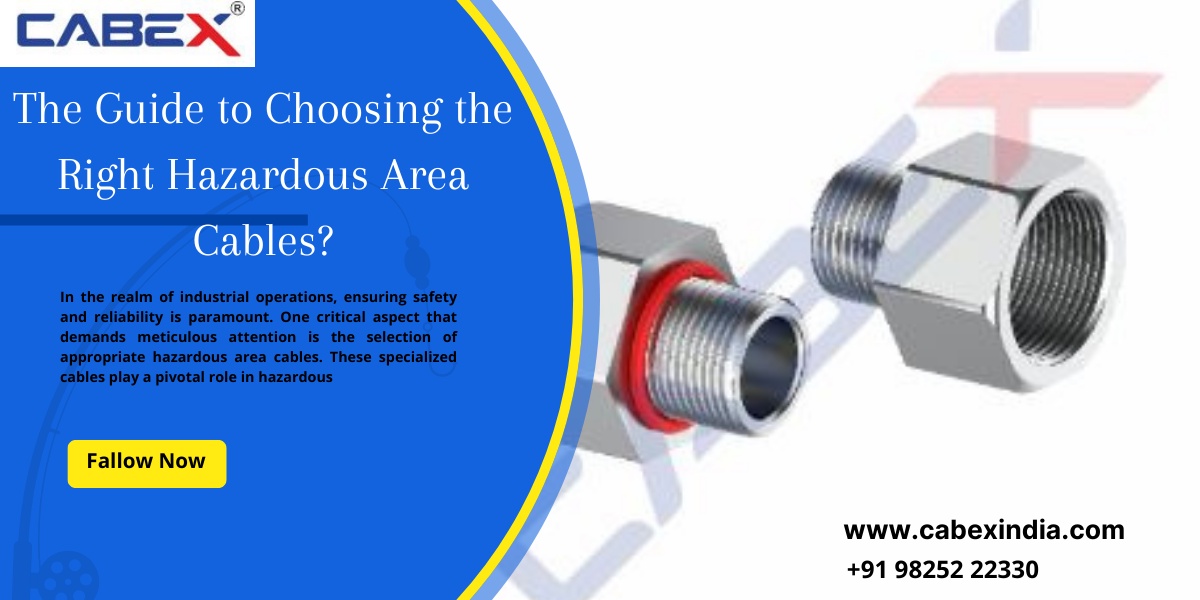In the realm of industrial operations, ensuring safety and reliability is paramount. One critical aspect that demands meticulous attention is the selection of appropriate hazardous area cables. These specialised cables play a pivotal role in hazardous environments where the presence of flammable gases, vapours, or combustible dust poses potential risks. This comprehensive guide aims to shed light on the intricacies of hazardous area cables, offering insights into key considerations and factors that influence the decision-making process.
Understanding the Basics
What Defines a Hazardous Area Cable?
Hazardous area cables are designed to operate safely in environments where the potential for explosive atmospheres exists. These environments are categorised into zones based on the likelihood and persistence of hazardous substances. The construction and materials of these cables are tailored to mitigate the risks associated with sparks, heat, and other factors that could lead to ignition.
Classification of Hazardous Areas
Before delving into cable selection, understanding the classification of hazardous areas is crucial. The widely adopted classification system includes Zone 0, Zone 1, and Zone 2 for gases, and Zone 20, Zone 21, and Zone 22 for dust. Each zone has distinct characteristics, necessitating specific cable properties.
Key Considerations for Choosing Hazardous Area Cables
1. Material Composition
The choice of materials in hazardous area cables significantly influences their performance. Robust insulation and jacketing materials are essential to resist chemical corrosion and mechanical stress. Polyethylene, lead, or other specialised compounds may be employed, depending on the nature of the hazardous substances present.
2. Temperature Ratings
Hazardous areas often experience extreme temperatures. Selecting cables with suitable temperature ratings ensures reliable performance. High-temperature insulation materials like fluoropolymers or silicone are common choices, providing resistance to heat without compromising integrity.
3. Conductor Type
Copper and aluminium are conventional choices for conductors, each with its advantages. Copper offers better conductivity, while aluminium tends to be more cost-effective. The decision depends on the specific requirements of the application and budget constraints.
4. Shielding for EMC Protection
Electromagnetic compatibility (EMC) is critical in modern industrial settings. Hazardous area cables with effective shielding help prevent electromagnetic interference, ensuring the seamless operation of sensitive equipment in these challenging environments.
5. Armor and Mechanical Protection
In areas with high mechanical stress or the risk of physical damage, opting for cables with robust armour is prudent. Steel wire armoring provides excellent protection against crushing, impact, and other mechanical hazards, enhancing the overall durability of the cable.
6. Certifications and Compliance
Strict adherence to industry standards and certifications is non-negotiable. Look for cables compliant with international standards such as IEC, NEC, or ATEX, ensuring they meet the necessary safety and performance criteria for hazardous areas.
7. Moisture and Chemical Resistance
Hazardous areas often involve exposure to moisture and various chemicals. Cables should be resistant to these elements to prevent degradation over time. Specialised coatings and materials can enhance resistance, extending the cable's lifespan in challenging conditions.
8. Flexibility for Installation
Consider the installation requirements of the hazardous area cables. Flexibility is crucial, especially in complex layouts. Flexible cables simplify installation and reduce the risk of damage during the process.
9. Cable Sizing and Voltage Rating
Accurate sizing and voltage rating are fundamental aspects of cable selection. Undersized cables can lead to overheating, while overestimating may result in unnecessary expenses. Thoroughly analyse the electrical requirements to determine the appropriate size and voltage rating for optimal performance.
Common Types of Hazardous Area Cables
1. Armoured Cables
Armoured cables feature robust metal armour, providing exceptional protection against physical damage. They are suitable for areas with high mechanical stress and the potential for impact.
2. Fire-Resistant Cables
In environments where fire safety is paramount, fire-resistant cables are indispensable. These cables maintain functionality even in the presence of flames, contributing to enhanced safety measures.
3. Instrumentation Cables
For control and instrumentation applications in hazardous environments, specialised instrumentation cables are designed with precision. They ensure accurate signal transmission while meeting safety standards.
4. Fibre Optic Cables
Fibre optic cables are gaining popularity in hazardous areas due to their immunity to electromagnetic interference and high bandwidth capabilities. They are ideal for data transmission in challenging industrial settings.
Installation and Maintenance Best Practices
1. Professional Installation
The expertise required for the installation of hazardous area cables is non-negotiable. Engage certified professionals who are well-versed in the specific requirements of hazardous environments.
2. Regular Inspections
Routine inspections are imperative to identify signs of wear, damage, or deterioration. Timely intervention can prevent potential hazards and extend the lifespan of the cables.
3. Documentation and Record-Keeping
Maintain comprehensive documentation of the hazardous area cables installed, including specifications, installation dates, and inspection records. This information is invaluable for audits and troubleshooting.
Conclusion
Selecting the right hazardous area cables is a multifaceted process that demands a nuanced understanding of the operating environment and specific application requirements. From material composition to certifications and installation practices, every aspect plays a vital role in ensuring the safety and reliability of industrial operations in hazardous areas. By navigating through the complexities with a well-informed approach, businesses can fortify their infrastructure and mitigate potential risks, setting the stage for seamless and secure operations in challenging environments.
Demystifying New Tech: What You Should Know About Your Latest Gadgets:


No comments yet